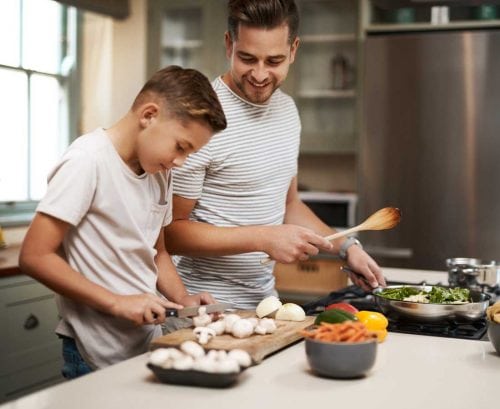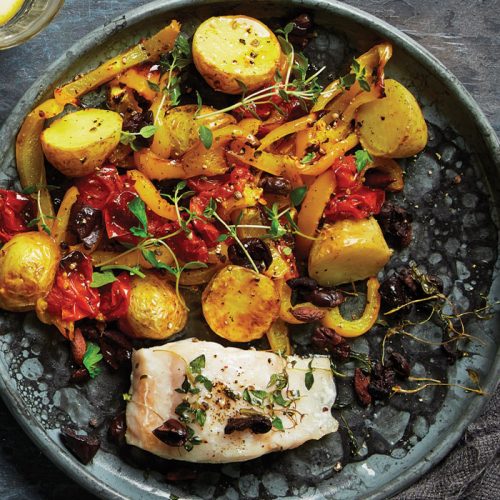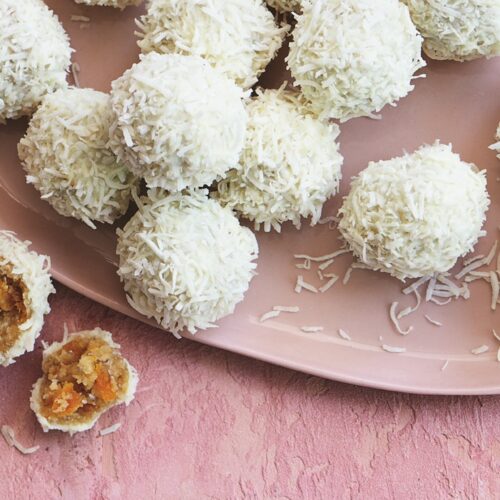
It’s not just what you eat, but how you prep and cook food, that can increase your intake of nutrients, not to mention keeping saturated fat to a minimum. Our favourite food writers, restaurateurs and cooks dish up their top techniques for a healthier kitchen…
1. Stir-frying
Frying veg, fish, chicken or meat in a wok over a high heat – stirring constantly to avoid burning
Why it’s healthy
Cooking quickly over a high heat means veg retain their nutrients, often lost in processes such as boiling. Using just a little oil instead of the large amounts used in shallow or deep frying keeps total fat to a minimum.
HFG know-how
Don’t overcrowd the pan; better to cook in batches, to keep veg tender-crisp.
Food writer Ching-He Huang says: ‘Stir-frying makes dishes taste delicious. Some woks come with a steamer rack and a lid, so you can also use it to steam fish and vegetables without using any oil at all.’
2. En papillote steaming
Cooking fish and veg in baking paper parcels in the oven
Why it’s healthy
The food steams in its own flavours, so there’s no need for salt. Steaming, like stir-frying, also helps to retain nutrients. Use fresh instead of frozen fish – frozen will dilute any added flavours as it thaws. Add lots of herbs and citrus ingredients to make the finished dish as tender and tasty as possible.
Award-winning chef and food writer Mitch Tonks says: ‘Team brill with leeks, salmon with fennel or bream with fresh tomatoes. Or wrap up clams, fresh tomatoes and a handful of cooked spaghetti, then steam in the oven for a fabulous, healthy meal.’
3. Quick pickling
Preserving a fruit or vegetable in brine (vinegar and water)
Why it’s healthy
Pickled vegetables make a healthy, punchy alternative to salads and generally don’t need any added fat to make them palatable.
HFG know-how
You can use just about any fruit or veg – carrots, apples, courgettes… Put in a jar with a mix of water and vinegar, add some herbs/spices, then seal and chill for up to a week.
Head of food at Abel & Cole Rachel de Thample says: ‘Try this quick recipe: chop or grate 500g fruit and/or veg. Add to a jar with 200ml vinegar, 75ml water and 1tbsp runny honey, and some herbs/spices, then mix well.’
4. Massaging
Tenderising tough veg by hand to make them easier to digest raw
Why it’s healthy
Massaging fibrous leaves such as kale means there’s no need to boil them, so you retain water-soluble vitamin C and folate, which are destroyed by high temperatures.
HFG know-how
Grab a bunch of kale leaves with both hands and rub together. The leaves will darken and become less bitter.
Food writer Donal Skehan says: ‘Massaging raw kale transforms it from a tough, somewhat bitter leaf into a sweet delicate ingredient – it only takes a few minutes. Add it to salads in place of lettuce.’
5. Blending
Whizzing vegetables and/or fruit to make soups and smoothies
Why it’s healthy
Blending fruit and veg into soups and smoothies is an easy way to get our five-a-day. Unlike juicing, blending uses the whole fruit/veg so retains vital fibre in the end product.
HFG know-how
Blend firm, uncooked or hard ingredients first to give them more time to break down. It’s also great for using up past-its-best produce.
Food writers Jasmine and Melissa Hemsley say: ‘Hand-held blenders are great for soups and dips, and can be used for smoothies if you team them with the right jug. It’s best to use a stand blender for harder vegetables.’
6. Dressing
Tossing salad with a mix of vinegar/citrus juice, oil and other flavours
Why it’s healthy
Studies show oil-based dressings increase the absorption of certain nutrients, such as beta-carotene.
HFG know-how
Despite the potential health benefits, all types of oil contain lots of calories, so always measure out the oil you use and mix with a larger quantity of vinegar or citrus juice to dilute it.
Food writer and nutrition expert Dale Pinnock says: ‘I like to pair oily fish with a dressing of olive oil, balsamic vinegar, garlic granules, pepper and oregano. This may increase the amount of vitamin D you’ll absorb from the fish.’
7. Braising
Searing, then slow-cooking tough cuts of meat for a very tender result
Why it’s healthy
Very little – if any – fat is required for searing. Slow cooking in a lidded casserole concentrates the natural flavours.
HFG know-how
It’s a great way to utilise cheaper cuts of meat. Add a little water or reduced-salt stock to the casserole dish, and root veg, herbs and spices for depth of flavour. Cook low and slow for best results.
Food writer Alex Mackay says: ‘I like to braise firm fish fillets, as well as meat. I sit them on top of (but not totally submerged in) a liquid or sauce, then cover with baking paper instead of a lid to let the steam escape so it doesn’t dilute the flavours.’
8. Microwaving
Steaming, reheating and partially cooking food without fuss
Why it’s healthy
Microwaves cook quickly, but the heating process is gentle so it helps to retain nutrients in food.
HFG know-how
Cooking time depends on the microwave’s power. Most models won’t brown/crisp your food, so if you want a jacket potato that’s fluffy inside with a crispy skin, finish in a hot oven for 5–10 min before serving.
HFG editor Melanie says: ‘I use mine mainly for reheating homemade meals – great when I don’t want to cook from scratch. There are two of us in our house, so I follow recipes for four and freeze half.
9. Poaching
Simmering food gently in liquid, such as water, stock or wine
Why it’s healthy
A fat-free, indirect cooking method whereby fish, chicken, veg or eggs are gently cooked in shallow, simmering liquid. The result: a delicate dish.
HFG know-how
Boost flavour by adding aromatics, such as fresh herbs or citrus juice, to the liquid. At the end of cooking, reduce the poaching liquid to make a nutrient-rich sauce.
Chef Michael Wignall says: ‘Poach lemon sole fillets, with the skin on, for about 6 min in vegetable or fish stock. This will lock in nutrients and flavour. Discard the skin after cooking – if the fish is cooked it should be easy.’
10. Spiralising
Creating ‘noodles’ and ribbons from vegetables
Why it’s healthy
It’s an easy way to get more veg into your diet and makes a lighter alternative to pasta.
HFG know-how
Choose firm produce that doesn’t contain stones or seeds – courgette, sweet potato, celeriac and the narrow end of squash are top choices.
TV presenter Davina McCall says: ‘My favourite vegetable to spiralise is courgette. I just love courgetti because it’s so similar to pasta. Before you try it, you think, “no way, it couldn’t be” – but it is! It’s filling, too, and goes with so many sauces.’
11. Steaming
Cooking fish, chicken or veg over a little gently simmering water
Why it’s healthy
Steaming maximises taste and colour without diminishing nutrients because of the indirect heating process. Unlike boiling, there’s no temptation with steaming to add salt to vegetables.
HFG know-how
If you don’t have a steamer (electric or basket), set a colander over a pan and cover with a lid to steam veg.
HFG’s Phil Mundy says: ‘I like to add robust herbs such as bay and rosemary to vegetables while they’re steaming – they release a delicate aroma and gently flavour the vegetables (discard them before serving). And for chicken and fish, try adding sliced chilli and lemon zest.’
12. Grilling
Cooking food under the heat source to give a golden, crisp finish
Why it’s healthy
The direct heat source means your food will cook quickly, helping to retain nutrients. Excess fat on meat will drip away.
HFG know-how
Marinating meat helps to keep it moist – go for a mix of lemon juice, garlic and herbs to keep the fat content down. Make sure you don’t char or burn food, as this can be harmful to health.
Food writer and blogger Karen Burns-Booth says: ‘For a healthy take on fish and chips, coat fish fillets with oatmeal or crumbled oatcakes and grill until crisp and cooked through. You’ll be giving your heart an omega-3 boost – plus the crunchy texture is wonderful.’
And once you’ve cooked…
Freezing
A handy way to keep a ready supply of home-cooked meals, plus veg, fruit and herbs
Why it’s healthy
You can batch-cook healthy meals, then freeze portions until needed as an alternative to ready meals full of fat, sugar and salt.
HFG know-how
Wrap food tightly to avoid freezer burn.
Jamie Oliver says: ‘Stock up on frozen vegetables – they’re great value, available all year, and are nutritious because they’ve been frozen at their peak.’
www.healthyfood.com










